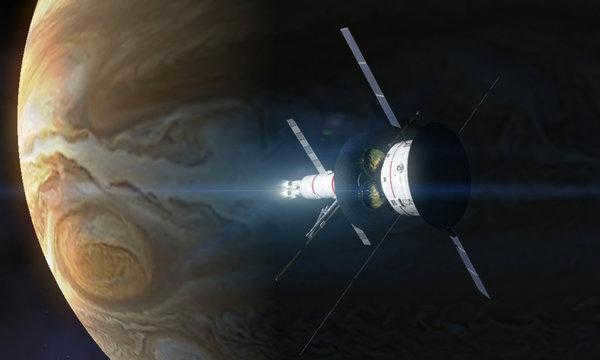The Andromeda Galaxy (or Andromeda) is the largest object closest to our Milky Way galaxy. It is located 2.5 million light years away from us. It is also the farthest object in space that can be observed with the naked eye.
What do we know about the Andromeda galaxy?
The Andromeda galaxy is a spiral galaxy, similar to the Milky Way in terms of its shape. It has a diameter of 220,000 light years, which is more than twice the size of the Milky Way. The Andromeda Galaxy contains approximately 1 trillion stars, which is more than 5 times the number of stars in our own galaxy. Its estimated mass is about 1.5 billion solar masses, significantly larger than the mass of the Milky Way, which is approximately 850,000 million solar masses.
As previously mentioned, Andromeda is visible to the naked eye and astronomers in past centuries believed it to be a nebula. Even the renowned William Herschel speculated that Andromeda was a nearby interstellar cloud. However, it is actually located about 2,000 times the distance to Sirius, approximately 16,000 light years away. In 1885, a supernova named S Andromedae was discovered in the galaxy, marking the first observation of a supernova in another galaxy.
Not until 1920 did it become evident that the observed cosmic object was not a nebula, but rather a distant galaxy. By 1953, scientists had calculated its distance to be approximately 1.5 million light years. It is now believed that Andromeda formed roughly 10 billion years ago as a result of multiple smaller protogalaxies colliding and merging.
The Andromeda Galaxy and its surroundings
Approximately 2 to 4 billion years ago, there occurred a remarkably close encounter between the Triangle Galaxy and Andromeda, which resulted in a momentous surge of star formation. This event also caused significant disruption to the outer region of the Triangle Galaxy. However, over the following 2 billion years, star formation within the Andromeda disk gradually diminished and is currently nearly non-existent.
Scientists have made an estimation that the Milky Way and the Andromeda galaxy are currently in the midst of their evolutionary climax. This assessment was made by considering the historical and present rates of new star formation in these celestial bodies.
So what will happen to these galaxies in the future? Essentially, the free gas will gradually diminish and the rate of star formation will significantly decrease. Eventually, new stars will cease to appear altogether.
The fate of Andromeda
I don’t mean to alarm you, but in approximately 4 billion years, the Andromeda Galaxy and the Milky Way will collide. At first glance, this may seem like a catastrophic event. However, it won’t be. The distances between stars are actually much larger than their sizes, so direct collisions are unlikely. Nevertheless, gravitational forces will exert their influence, resulting in the formation of a new elliptical galaxy known as Milcomeda. This collision is expected to trigger another period of intense star formation at the core of the newly merged galaxy.
It is uncertain what will occur to the solar system. However, as previously stated, it is highly probable that nothing will happen. This is due to the fact that star collisions are exceedingly rare. Nevertheless, there exists a slight possibility that the solar system may be expelled from the Milky Way, even prior to any collision.
The ever-changing nature of the universe
So, the next time you gaze up at the vast expanse of the celestial sky, bear in mind that even the cosmos itself is in a perpetual state of flux. Nothing remains unchanged in this enchanting realm. Even galaxies undergo transformation over the course of billions and billions of years. So, let it be known that we are fortunate to witness a momentous chapter in the narrative of the cosmos. And yet, this era is not everlasting. It is possible that only a handful of civilizations in this galaxy (assuming there are any besides our own) will be able to lay claim to memories of a time when the Milky Way and the Andromeda Galaxy were distinct entities.
But what lies in store for Earth? It is quite evident that Earth will become an uninhabitable planet long before these celestial events unfold. However, if humanity manages to endure, whether on another planet or within another star system, our distant descendants will bear witness to the spectacular cosmic collision from the best seats in the grand theater of the Universe.
p_i_f
FOR EVERYONE AND EVERYTHING
For the first time ever, scientists have successfully measured the precise distance to the nearest galaxy. This particular galaxy is a dwarf known as the Large Magellanic Cloud. To be more exact, it is situated 163 thousand light-years or 49.97 kiloparsecs away from us.
The Large Magellanic Cloud galaxy gracefully drifts through space, encircling our very own galaxy, the Milky Way, much like the Moon orbits the Earth.
Enormous gas clouds surrounding the galaxy gradually dissipate, leading to the creation of new stars that illuminate the vast interstellar space with their radiant light. This breathtaking phenomenon has been captured by the Hubble Space Telescope, also referred to as “Hubble”.
In our neighborhood, the Large Magellanic Cloud contains the Tarantula Nebula, which is the most luminous stellar nursery in the universe. Recently, scientists have discovered signs of new star formation in this small galaxy.
Using a technique called the observation of eclipsing double stars, researchers were able to calculate precise distances to these stars. Eclipsing double stars are pairs of stars that are gravitationally bound together. When one star eclipses the other, as seen from Earth, the overall brightness of the system decreases.
By comparing the brightness of these stars, scientists can accurately determine their distances with remarkable precision.
It is of great significance to determine the precise distance to celestial objects in order to comprehend the scale and age of our Universe. Currently, the question remains unanswered: what is the exact size of our Universe, none of the scientists are capable of stating it.
Once astronomers achieve such precision in measuring distances in outer space, they will be able to observe more remote objects and ultimately calculate the size of the Universe.
The newfound capabilities will also provide them with the opportunity to determine the rate of expansion of our universe more accurately, as well as calculate the Hubble constant more precisely. The Hubble constant. This factor was named after Edwin P. Hubble, an American astronomer who demonstrated in 1929 that our universe has been continuously expanding since its inception.
Galactic Distances
The nearest dwarf galaxy is the Large Magellanic Cloud, but the largest galaxy is our next-door neighbor, the spiral galaxy Andromeda, which is located approximately 2.52 million light years away.
Over time, the distance between our galaxy and Andromeda has been gradually decreasing. They are moving towards each other at a speed of about 100-140 kilometers per second. Despite their impending meeting, it will not occur for another 3-4 billion years.
Perhaps this is what an observer on Earth will see in the night sky billions of years from now.
Due to constant dynamics, the distances between galaxies can vary greatly at different points in time.
Dimensions of the Universe
The observable Universe possesses an incredibly vast size, measuring in billions, and potentially even tens of billions of light-years. Many of the celestial objects we can observe through telescopes have either vanished or appear drastically different due to the immense travel time of light to reach us.
The following sequence of visuals aims to provide a general understanding of the scale of our Universe.
The planetary and dwarf planetary bodies of our Solar System
The Sun (located at the center) and its closest neighboring stars
The Milky Way galaxy, featuring an indication of the group of star systems most proximate to our Solar System
A collection of nearby galaxies, comprising over 50 known galaxies, with the count continually growing as new ones are discovered.
Will it be possible for humans to relocate to another galaxy within the next 100-200 years?
Theoretically, there are no limits. This especially applies to the upcoming 100-200 years.
About the principles of relativistic (or modern) physics:
- The closest stars are approximately 4.5 light-years away. Let’s assume that we can travel to them at 0.1 the speed of light. In this case, reaching the closest stars at pre-light speeds would take around 45 years.
- The closest galaxy is situated at a distance of around 25,000 light-years. Therefore, it is not realistic to try to reach it at pre-light speeds.
It should be understood that coming close to reaching a speed of 0.1 light years is currently impossible.
First consideration:
Mankind, not too long ago, made the discovery that there is a significantly larger amount of mass in the universe than what is visible to our naked eyes and all the instruments we have created thus far. The nature of this mass remains a mystery, and we have labeled it as dark matter. Despite our efforts, we are unable to perceive, touch, or even detect it through our senses. This perplexing phenomenon continues to baffle us.
Additionally, scientists have come to the realization that the expansion of the universe is not slowing down, but rather accelerating. To account for this observation, they introduced the concept of an invisible and immeasurable energy, which is also referred to as dark energy. Once again, we find ourselves scratching our heads in bewilderment.
As I suspect, humanity, currently, can be likened to a sightless kitten in terms of its understanding of the universe. Perhaps it is more akin to a kitten whose eyes have only just opened. We are completely unaware of what lies hidden in all these unexplored realms. There is likely a realm of non-relativistic mechanics, among many other possibilities.
In this scenario, what do you believe could be possible in the next 100-200 years?
Second point to consider:
At this juncture, humanity has come to realize that progress is advancing at an exponential rate. This implies that there is a point in the future where the trajectory of progress becomes almost vertical. And scientists have even calculated when that point will be reached. It is the year 2050. That’s a mere 30 years from now! What do you envision will occur in the next 100-200 years?
The third point to consider:
Humanity itself is undergoing an evolution that seems to have no clear pattern, yet it is undeniably slower than the rapid progress of technology in our current era. In light of this, it is reasonable to assume that there will come a time when technological advancement surpasses human development and achieves independence. This phenomenon is known as “Technological Singularity”. The exact nature of this event remains uncertain, and many speculations have been made. Detailed information on this topic is readily available for those who are interested. However, it is worth considering that one possible consequence of this situation is the potential suppression of human intelligence by our own creations. This raises the question: what will become of humanity in the next 100-200 years? Will we resort to swords and sorcery, or will we harness the power of advanced devices that we perceive as magic, without understanding their inner workings? The possibilities are vast and intriguing.
There are numerous possibilities for what might occur to humans in the next 100-200 years. It is conceivable that extraterrestrial beings could consume us, although this is not certain. If these beings are truly intelligent, they likely do not require us as a food source. Alternatively, our own artificially intelligent systems could turn against us and consume us. However, it is also possible that they would not consume us, as they would rapidly advance beyond the stage where consuming us would serve any purpose. Another potential outcome is that we will bring about our own destruction, as our rapidly advancing technology may eventually produce weapons that are too dangerous for us to handle. On the other hand, we might not be consumed or self-destruct, but instead continue to evolve. The possibilities are numerous, and only time will reveal the true outcome. In fact, we have the ability to shape and envision the future ourselves.
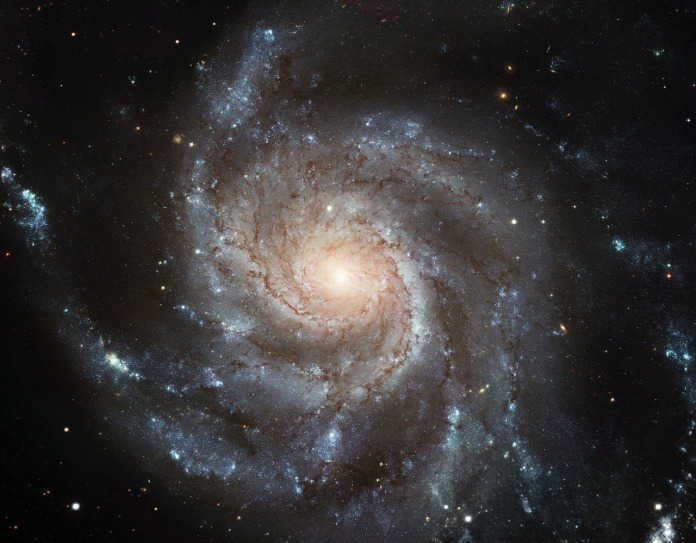
In May 2015, astronomers using the Hubble telescope made an incredible discovery. They observed the outburst of a galaxy named EGS-zs8-1, which is the most distant and oldest known galaxy to date. This galaxy is so far away from us that it took the light 13.1 billion years to reach Earth and be recorded by our equipment. Based on this observation, scientists estimate that EGS-zs8-1 came into existence approximately 690 million years after the Big Bang.
It might seem logical to assume that the distance to EGS-zs8-1 is equal to the distance that light would travel in 13.1 billion years. After all, that’s how long it took for the light to reach us. However, the vastness of the universe and the expansion of space-time make this assumption incorrect. The actual distance to EGS-zs8-1 is much greater than 13.1 billion light-years.
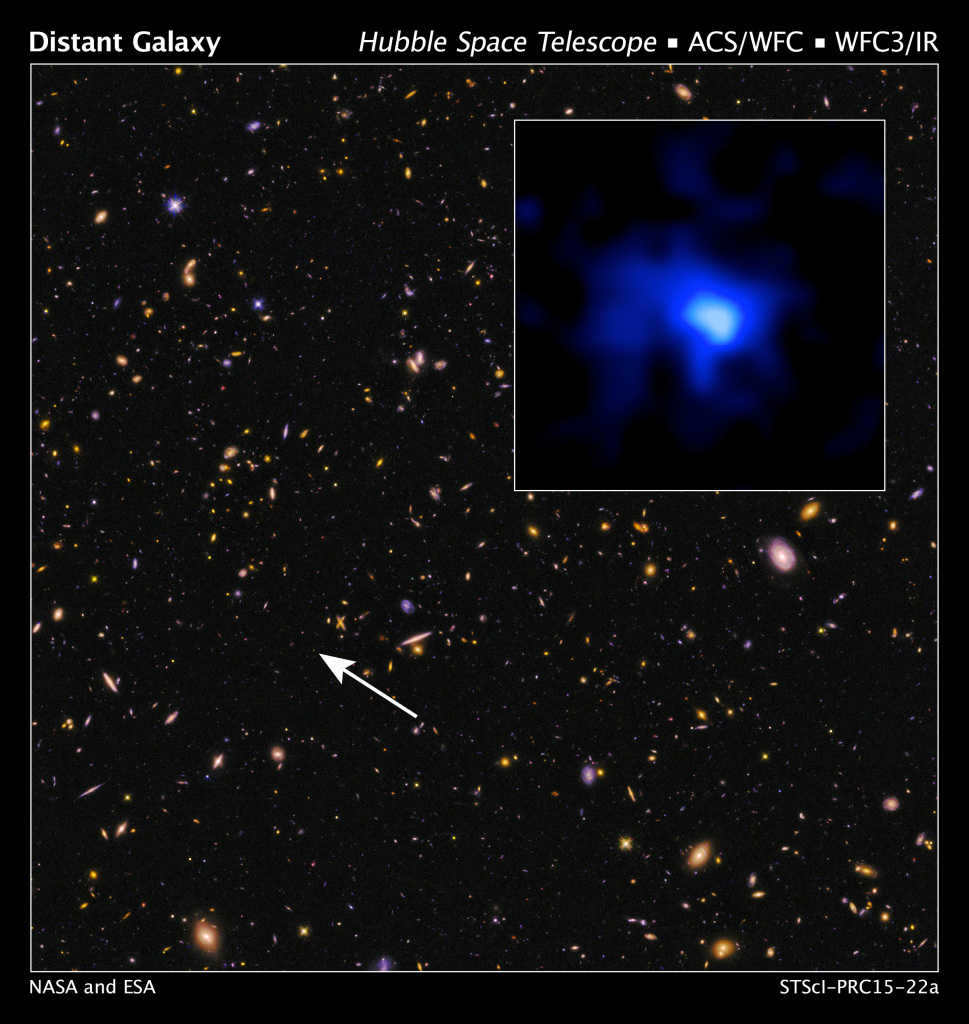
The most distant galaxy discovered so far is Galaxy EGS-zs8-1.
However, it is important to consider certain aspects of our world’s structure that will significantly impact distance calculations. The universe is expanding, and it is doing so at an accelerating rate. This means that while light has traveled for 13.1 billion years before reaching our planet, space has been expanding further and further, causing the galaxy to move away from us at an increasingly faster pace. A visualization of this process is depicted in the image below.
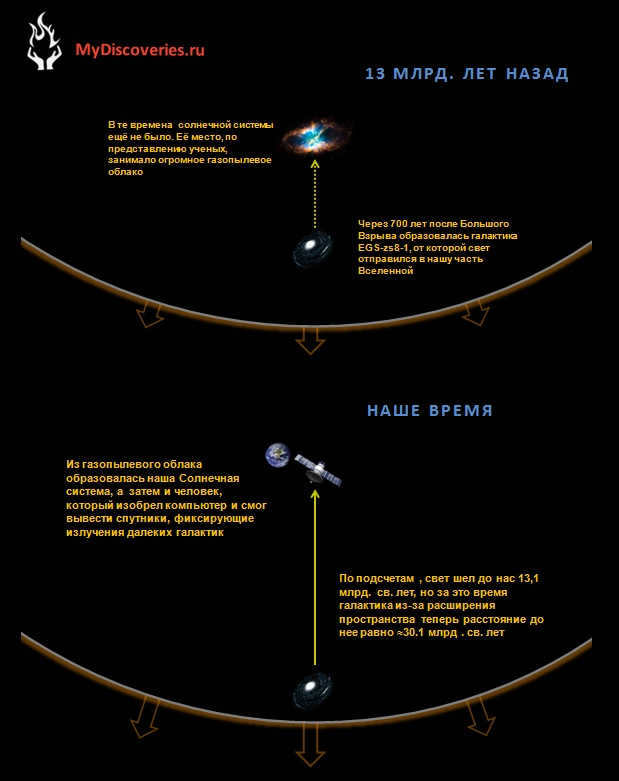
With the expansion of the universe, the nearest galaxy EGS-zs8-1 is currently situated approximately 30.1 billion light years from our location, making it the furthest galaxy known to us. It is fascinating to note that we can expect to discover even more distant galaxies in the future, whose light has not yet reached us. Therefore, it is highly likely that the current record held by the EGS-zs8-1 galaxy will eventually be surpassed.
Here’s something fascinating: there is often a misconception regarding the magnitude of the universe. It is often compared to its age, which is 13.79 billion years. However, this fails to consider the fact that the universe is expanding at an accelerating rate. Rough estimates indicate that the visible universe has a diameter of 93 billion light-years. Nevertheless, there is also an unseen portion of the universe that will forever remain beyond our sight. Learn more about the scale of the universe and the existence of imperceptible galaxies in the article “Understanding the Visible Universe and the Limitations of our Perception“.
What is the destination of our galaxy?
It is common knowledge that our planet orbits not only around the Sun, but also revolves around the center of our galaxy. However, the galaxy itself is not stationary either. So, where is it headed?
Prepare to discover our galactic trajectory and the velocity at which we are moving.
If you are looking for additional information, this is the perfect spot to find it.
However, to summarize, we reside on planet Earth, which orbits both its own axis and the Sun. The Sun itself follows an elliptical path around the center of the Milky Way, which extends towards the Andromeda galaxy within our Local Group. The Local Group, in turn, moves within the vast Laniakea Superscope, encompassing galactic groups, clusters, and cosmic voids. Ultimately, these celestial structures are situated within the KBC void, occupying a central position within the larger scale structure of the Universe.
What is the destination of our journey through space and time?
First of all, let’s take a look around and acquaint ourselves with our neighbors in the vast expanse of the Universe. In recent decades, we have accumulated a wealth of knowledge, and the term “cosmography” is no longer confined to the realm of Strugatsky’s fantasy novels. It has become an integral part of modern astrophysics, focused on the mapping of the observable Universe. The closest companion to our own Milky Way is the Andromeda galaxy, a stunning sight that can be observed in the night sky with the naked eye. However, there are many more companions that remain hidden from our view. These are the dwarf galaxies that orbit around both our Milky Way and Andromeda. They are incredibly faint, and astrophysicists have yet to confirm the existence of all of them. Nevertheless, all of these galaxies, including the undiscovered ones, as well as the Triangle Galaxy and the NGC 300 galaxy, are included in the Local Group of galaxies. Currently, there are 54 known galaxies in the Local Group, with the majority of them being the aforementioned dim dwarf galaxies. The Local Group spans over 10 million light-years in size. Furthermore, the Local Group, along with approximately 100 other galaxy clusters, is part of the Virgo supergroup, which stretches over a colossal distance of more than 110 million light-years.
Observations and computer simulations have provided evidence that the arrangement of galaxies and clusters in the Universe is not random, but rather forms a intricate sponge-like structure consisting of filaments, nodes, and voids, commonly referred to as voyds. It was first demonstrated by Edwin Hubble nearly a century ago that the Universe is undergoing expansion, and it is gravity that prevents super clusters, the largest cosmic structures, from dispersing. In other words, the filaments are moving away from each other due to the influence of dark energy, while the gravitational pull between objects within these filaments is primarily responsible for their motion.
Now that we are aware of the vast number of galaxies and clusters in our vicinity, exerting such strong gravitational forces on each other that they surpass the expansion of the Universe, it is time to pose the fundamental question: where is this all heading? This is the query that a team of scientists, led by Yehudi Hoffman from the Hebrew University of Jerusalem and the aforementioned Brent Tully, aim to elucidate. Their collaborative research, published in the esteemed journal Nature, is built upon the data obtained from the Cosmicflows-2 project, which has meticulously measured the distances and velocities of over 8,000 neighboring galaxies. Launched in 2013 by Brent Tully and his colleagues, including Igor Karachentsev, one of the most renowned Russian observational astrophysicists, this project has yielded invaluable insights into the cosmic landscape.
So where is everything headed? To answer this question, we need an accurate map of the velocity of all massive bodies in the nearby Universe. Unfortunately, the data from Cosmicflows-2 is not enough to create this map. Despite being the best data available to mankind, it is incomplete, of varying quality, and contains significant errors. Professor Hoffman used Wiener estimation on the available data. This statistical technique separates the useful signal from the noise, which in this case comes from radio electronics. This estimation allows us to create a basic model of how the system behaves, known as the Standard Cosmological Model. This model determines the overall behavior of all elements when there are no additional signals present. In other words, the movement of a specific galaxy will be determined by the general principles of the Standard Model when there is insufficient data, and by the measurement data when it is available.
The results obtained have validated our previous knowledge – the entire Local Group of galaxies is currently moving through space towards the Great Attractor, a gravitational anomaly situated in the center of Laniakea. Interestingly, the Great Attractor itself, despite its name, is not as massive as one might expect. In fact, it is being pulled towards the even more massive Shapley supergroup, which we are currently approaching at a velocity of 660 kilometers per second. However, complications arose when astrophysicists attempted to compare the measured velocity of the Local Group with the calculated velocity based on the mass of the Shapley supergroup. It turns out that, despite its immense mass (which is equivalent to 10,000 times that of our Galaxy), it is incapable of accelerating us to such a high speed. Furthermore, by creating a map of anti-velocity (a map that displays vectors pointing in the opposite direction of the velocity vectors), scientists have discovered a region that appears to repel us. Interestingly, this region is located directly opposite to the Shapley supercollapse and repels us at exactly the speed necessary to achieve the total velocity of 660 kilometers per second.
The entire attractive-repulsive configuration resembles the shape of an electric dipole, with the lines of force extending from one charge to another.
However, this contradicts our current understanding of physics – anti-gravity cannot exist! What sort of phenomenon is this? To find the answer, let’s imagine that you are surrounded and being pulled in different directions by five friends – if they exert the same amount of force, you will remain stationary, as if no one is pulling you. However, if one of them, positioned on the right, releases their grip on you, you will shift towards the left – in the opposite direction of that friend. Similarly, if a sixth friend joins the five pulling friends and stands to the right, but starts pushing you instead of pulling, you will also shift towards the left. This may seem like a strange example, but it holds true. The FTL engine operates on a similar principle, but we will discuss it in more detail later.
Actually, you might argue that it’s even more straightforward than that. On one hand, we have a massive gathering of dust, gas, stars, galaxies, and so on, while on the other hand, we encounter something that behaves in the opposite manner, similar to antigravity, which pushes us away. That place also contains a significant amount of this “antimatter.”
What is the speed at which we are moving?
As the Earth rotates on its axis, we are constantly in motion through space. For instance, in Moscow, even if you are just sitting and reading Ya.Zen, you are moving at a speed of 265 meters per second. This is our first form of motion.
Additionally, we are also moving around the Sun. Planet Earth orbits the Sun at a velocity of 30 kilometers per second.
Furthermore, our solar system is not stationary either. It is actually moving at a speed of 230 kilometers per second as it revolves around the center of our Galaxy, known as the Milky Way.
When we gauge the speed of the Galaxy in relation to faraway galaxy clusters, we observe a distinct scenario: both our galaxy and the other galaxies within the Local Group are collectively progressing towards the massive Virgo cluster at an approximate speed of 400 km/sec. This movement is likewise influenced by gravitational forces.
The fifth point is that the relic radiation in the background defines a unique frame of reference that is associated with all the baryonic matter in the observable portion of the Universe. In other words, any motion relative to this microwave background can be considered as motion relative to the Universe as a whole (this should not be confused with the scattering of galaxies!). By measuring the non-uniformity of the dipole temperature anisotropy in various directions, it is possible to determine this motion. Surprisingly, these measurements have revealed something unexpected and significant: all galaxies in the closest part of the Universe, including not only our Local Group but also the Virgo cluster and other clusters, are moving at a surprisingly high speed relative to the background relic radiation. For the Local Group of galaxies, this speed is 600-650 km/sec with a point of origin in the Hydra constellation. It appears that somewhere deep in the Universe, there may be a massive cluster of many superclusters that has not yet been detected. This hypothetical cluster has been named the Great Attractor.
Deep space objects > Stars > How much time will it require to journey to the closest star?
Discover, the duration of a journey to the nearest star: the nearest star to Earth after the Sun, the distance to Proxima Centauri, details of launches, and new technologies.
Contemporary humanity devotes efforts to exploring our own solar system. However, are we capable of embarking on an expedition to a neighboring star? And how much time would it take to travel to the nearest star? This question can be answered straightforwardly or delved into the realm of science fiction.
If we consider today’s technological capabilities, the actual figures may discourage enthusiasts and dreamers. Let’s not forget that space distances are incredibly vast, and our resources are still limited.
The sun, which is the closest star to planet Earth, is situated in the middle of the main sequence. However, there are numerous neighboring stars surrounding us, allowing for the creation of an extensive route map. The question that arises is: how long does it take to reach these stars?
Journeying to the Sun
Every seasoned traveler understands that the duration of a journey from point A to point B is dependent on factors such as distance, speed, road conditions, and mode of transportation. The distance between Earth and our star is approximately 150 million kilometers, or 1 astronomical unit. A beam of light covers this expanse in a mere 8 minutes. On foot, it would take 2000 years to make the journey, while by car it would require 170 years. Taking an airplane would shorten the duration to 20 years, and traveling by an interplanetary ship would take approximately 6-8 months.
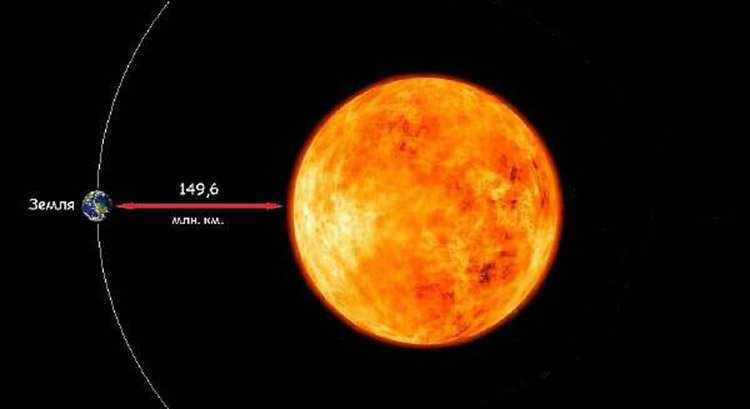
What about the state of the road? It appears to be an open area with no obstacles. However, in a vacuum, all objects heat up rapidly. A person can only safely approach the star at a distance of 5 million kilometers in a spacesuit. A spaceship equipped with a heat-resistant shell that can withstand temperatures of 2500C can approach at a distance of 2 million kilometers. We must also consider the effects of radiation, which can be deadly to the crew even halfway from Earth.
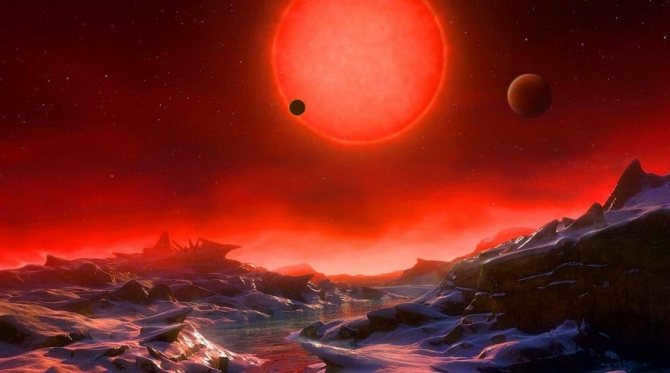

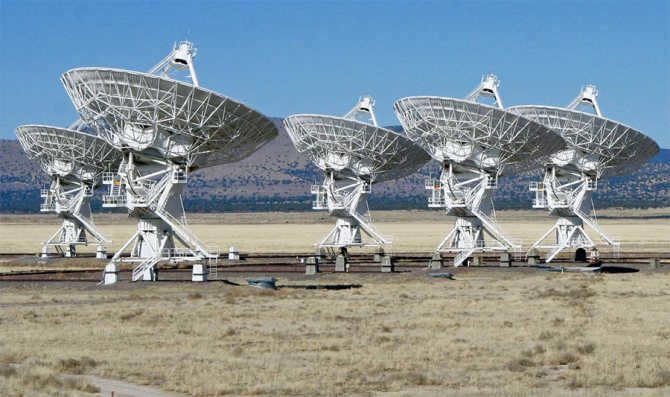
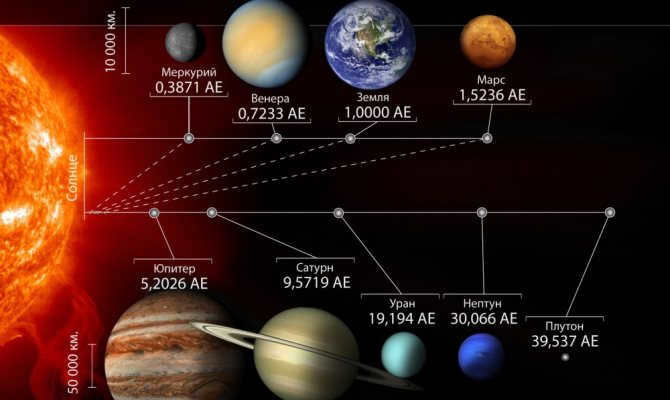

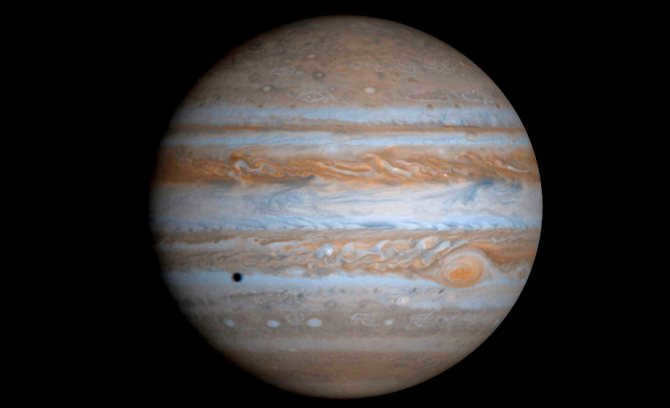
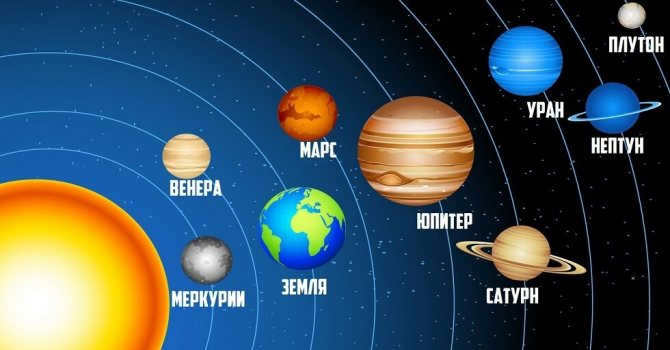


An effective technique for determining cosmic distances involves utilizing the parallax method, which encompasses the following steps:
- Select two distinct points on Earth (preferably situated as far apart as feasible). The line connecting these points is known as the baseline.
- A star, planet, or other celestial entity, whose distance is being determined, serves as the third point, forming the vertex of the abstract triangle.
- Subsequently, the measurement of the angle with the vertex at the third point is conducted, specifically the angle opposite the baseline, referred to as the horizontal parallax.
- Trigonometric formulas are then employed to perform calculations and ascertain the distances to astronomical objects.
Giovanni Domenico Cassini was the first to employ this method in the 17th century.
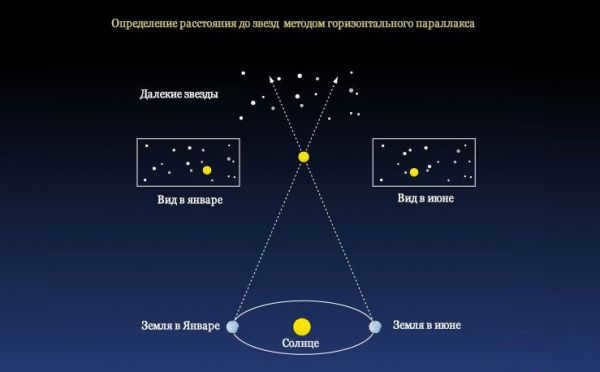
The horizontal parallax method is utilized to determine the distance to stars. This technique is credited to spacegid.com.
Reasons to Take Flight
Exploring the Sun is crucial for the survival of mankind. Primarily, this is due to the impact of magnetic storms.
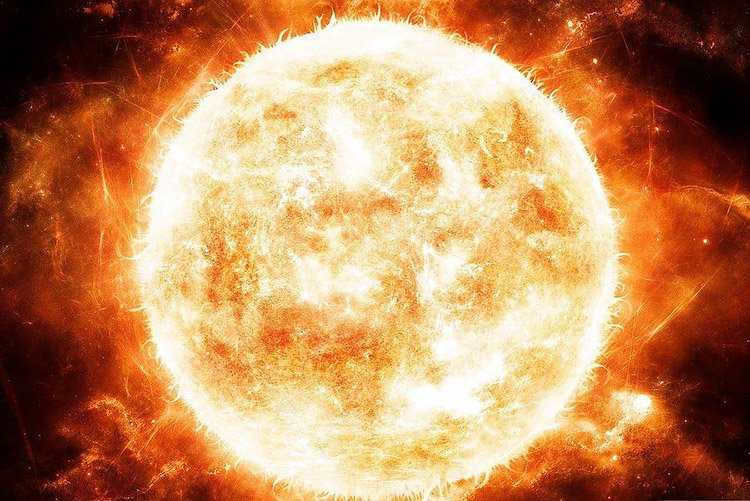
Their intensity is clearly associated with the 11-year cycle of solar activity. A powerful magnetic storm can lead to communication equipment malfunctions, an increase in car accidents, and worsened health for people who are sensitive to weather changes. Throughout the observation period, scientists have identified several particularly strong events of this nature:
- 1859, known as the Carrington event. Telegraph systems in North America and Europe ceased to function, and the northern lights were visible worldwide.
- March 13, 1989, known as the “Quebec” event. There were widespread power failures in Quebec, and high-frequency communications around the world were disrupted. The northern lights were visible in Mexico and Simferopol.
- July 23, 2012, with a level of intensity equivalent to the Carrington event.
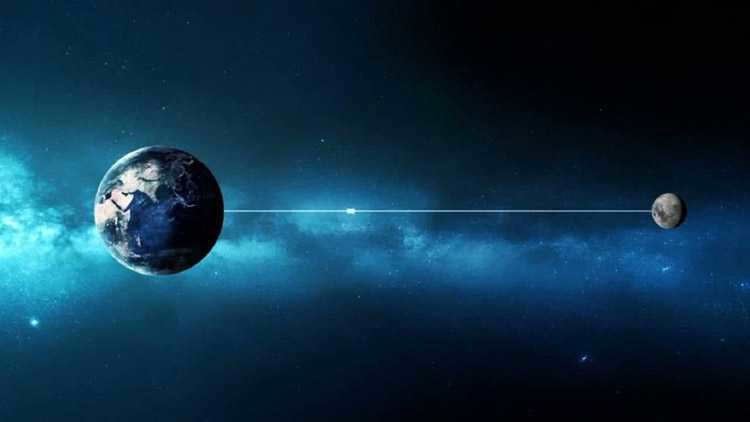
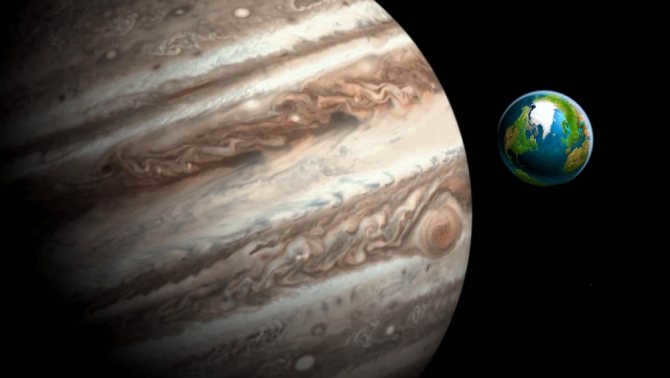

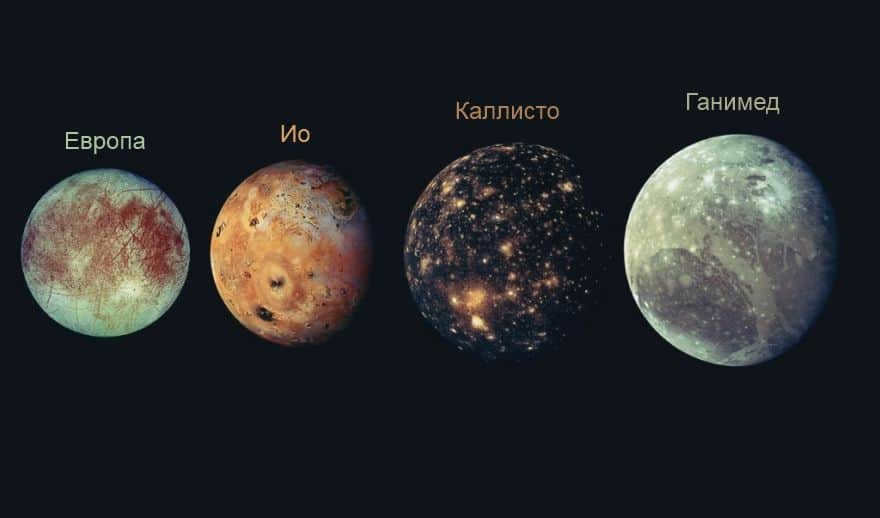
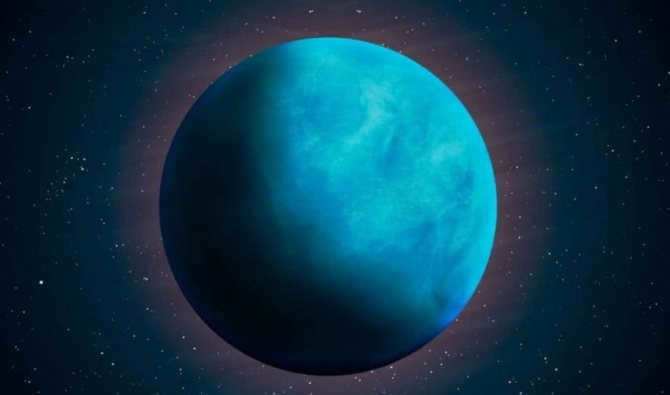
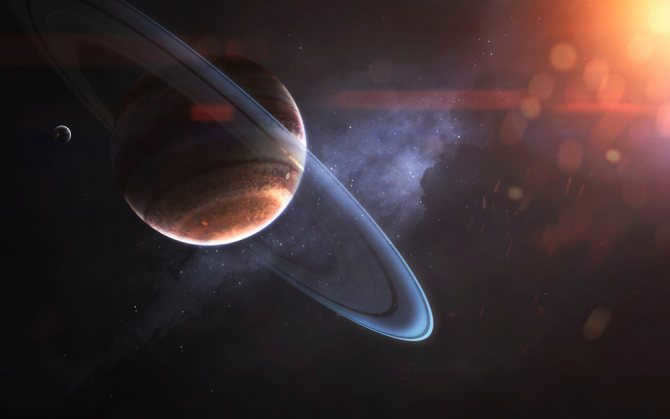

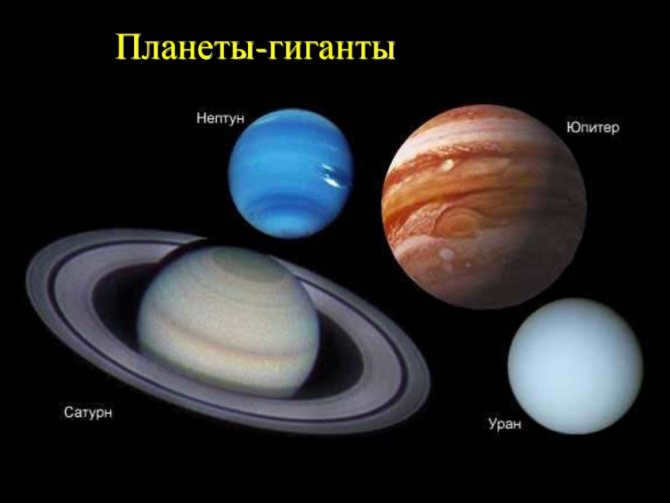
The region situated between Mars and Jupiter is commonly known as the asteroid belt. This expanse is inhabited by numerous oddly shaped entities known as asteroids and was first observed by astronomers in the early 19th century. It has since been extensively researched.
Within the asteroid belt, also referred to as the main belt, there exist four prominent asteroids:
The most sizable entity in the main belt is Ceres, which experts classify as a dwarf planet due to its diameter of approximately 950 kilometers. The other asteroids in the largest group have diameters that do not exceed 600 kilometers.
The remaining particles in the asteroid belt vary greatly in size, with some being minuscule specks of space dust. However, their collective number exceeds one million. Despite this immense quantity, the belt is not considered overcrowded.
Spacecraft traverse this region without ever encountering asteroids, but celestial bodies do collide with each other here on a regular basis (given the astronomical time scales).
The outcome of these collisions can vary depending on the velocity of the asteroids: at high speeds, a family of asteroids may form from the fragments of the collided ones, whereas at low speeds, two asteroids may merge into one.

Asteroid Classification
When it comes to the main belt of asteroids, their classification is typically based on their chemical composition.
Carbon-based
These dark asteroids can only be observed in the sky with the assistance of a telescope. As their name suggests, they are primarily composed of carbon, as well as minerals and rocks. Carbon-based asteroids make up the majority of the main belt, accounting for approximately 75% of all objects. They are most prevalent on the outer edge of the belt, with their numbers decreasing significantly as they move further away from the Sun.
The objects in question have a composition that closely resembles that of stone meteorites, with a high concentration of silicon. They make up approximately 17% of the asteroid belt, with their highest concentration occurring at a distance of 2 astronomical units from the Sun. As the distance from the star increases, the number of these objects decreases. The asteroids in this category have a moderate level of brightness, and among them is a particularly large object known as Eunomia, which has a width of approximately 330 kilometers.
Iron asteroids
The largest group of objects in the asteroid belt is composed primarily of iron and nickel. These asteroids have a moderate brightness and are believed to be the remnants of metallic cores from larger asteroids that were shattered by impacts.

Timeline of Observations
Since the dawn of the space era in 1957, the study of the sun has transitioned from being conducted on the surface of our planet to being carried out in Earth’s orbit. These investigations have been undertaken from various platforms including satellites, COPs, rockets, and balloons. Here are some significant milestones:
- In 1957, the Soviet Sputnik 2 mission utilized metal and organic filters for their studies.
- In 1959, the Luna 1 and Luna 2 spacecraft provided experimental evidence for the existence of the solar wind.
- From 1960 to 1968, the instruments aboard NASA’s Pioneers 5-9 measured various parameters of the solar wind.
- In the 1970s, the Helios 1 and Helios 2 satellites orbited the Sun at a distance of 40 million kilometers, collecting extensive data on the solar wind.
- In 1973, the Apollo Telescope Mount space observatory investigated the solar corona, leading to the discovery of coronal holes and coronal ejections.
- From 1980 to 1984, the U.S. SolarMax space probe was dedicated to studying solar radiation during periods of activity.
- In 1990, the Ulysses space probe was launched and performed a gravitational maneuver near Jupiter before starting its research on the polar regions of the sun.
- In 1991, the Japanese Yohkoh satellite conducted X-ray studies of the Sun.
- In 1995, the joint program SOHO, which involved NASA and the European Space Agency, was launched.
- In 2004, the Genesis space probe returned to Earth with the objective of extracting information on composition.
- In 2006, the Japanese solar observatory Hinode was launched into Earth orbit. It is equipped with optical solar and X-ray telescopes, as well as an ultraviolet spectrometer, to investigate the processes occurring in the solar corona.
- In the year 2010, the United States successfully deployed the SDO solar observatory into Earth’s orbit.
In order to travel to other stars, it is necessary to send 98 individuals to each of them
The planet known as Proxima Centauri b, or simply Proxima b, was discovered two years ago by astronomers from the European Southern Observatory (ESO) at Proxima Centauri, the closest star to the Sun. Scientists are now considering the possibility that there may be life on this planet, including highly advanced life forms.
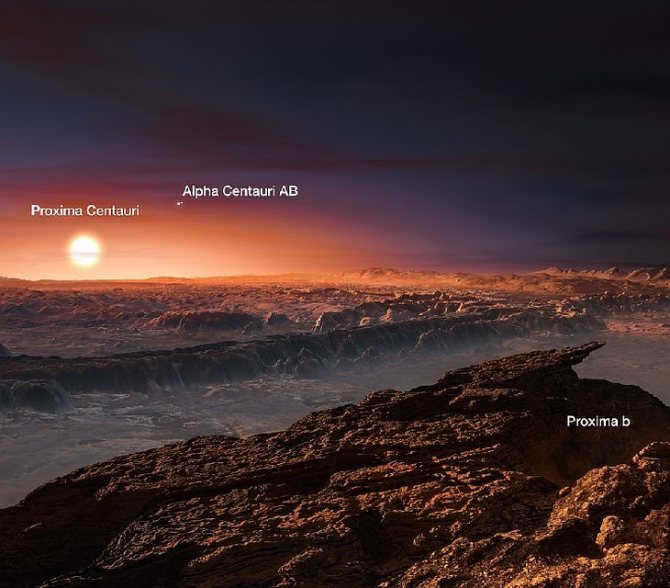

This is the scenery that will be exposed to the generation that arrives at Proxima Centauri b.
Is it feasible to reach the siblings in intelligence? According to French scientists from the University of Strasbourg (University of Strasbourg, France), it’s quite feasible. It can be initiated in the very near future. However, there is one condition: the construction of a starship capable of carrying at least 98 individuals.
The French scientists supported their conclusion in a scientific paper titled “Computing the minimal crew for a multi-generational space travel towards Proxima Centauri b.”
Based on the research conducted by Marin and Beluffi (Frédéric Marin, C.Beluffi), the initial plan for earthlings to explore another star involves the use of a “generational ship”. This ship will serve as a long-term home for the passengers, allowing them to live and reproduce for many years until they reach their destination. However, a crucial question arises: how many people should be initially loaded onto the ship to prevent the degeneration of the population? To answer this question, the French researchers utilized advanced computer modeling, simulating various scenarios including epidemics and internal conflicts that the travelers may encounter during their journey.
Also check out: Neutron stars, white dwarfs, brown dwarfs, and other celestial bodies that are not classified as stars
What is the estimated duration of the journey? Marin and Beluffy have also calculated this. They explained that the fastest spacecraft currently in existence is the Parker Solar Probe, which NASA plans to send to the Sun in the near future to study its corona. The probe can reach speeds of up to 700,000 kilometers per hour. This speed was used as a reference point, as it is quite achievable at present. With this speed, it would take approximately 6,300 years to travel to Proxima b, which is located 4.2 light years away and roughly equivalent to 40 trillion kilometers.
The French researchers suggest that with a crew of 98 carefully selected individuals, it would be possible to extend the duration of the flight and therefore travel even further. However, strict genetic screening would be necessary to prevent degeneration and avoid inbreeding among close relatives.
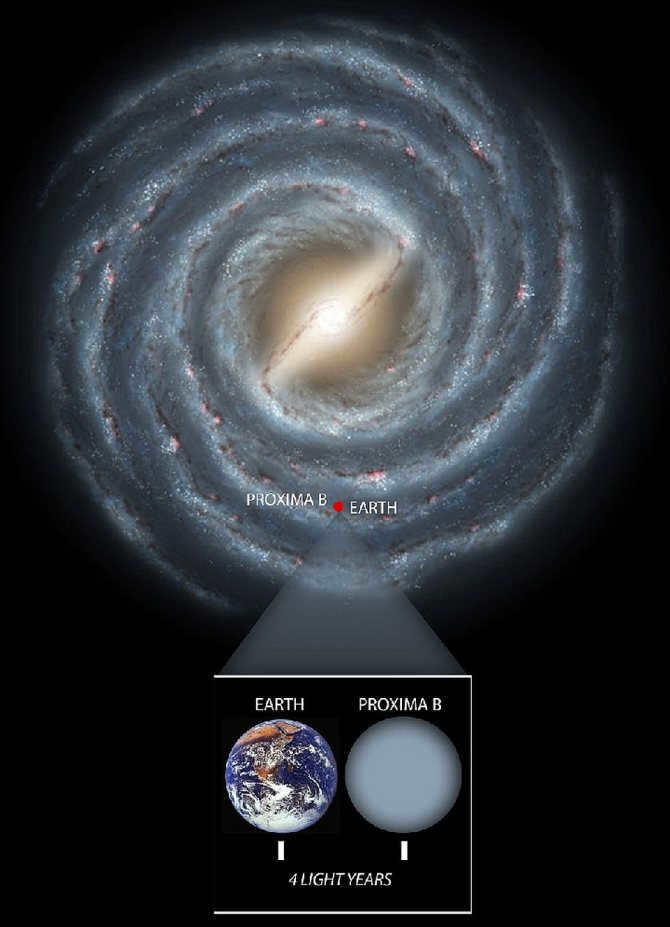
By astronomical measures, Earth and Proxima Centauri b are practically neighbors.
Proxima Centauri is a mere 4 light years distant.
Scientists have previously attempted to calculate the perfect number of crew members for the “ship of generations,” also known as the “magic number.” In 2002, anthropologist John Moore from the University of Florida conducted his own calculations. Incidentally, Moore also justified the choice of the concept that interested the French. They believe that nothing surpasses the family in terms of preserving a population, as it has been proven effective over millions of years. Therefore, families should make up the foundation of the crew.
However, Moore believed that the journey would not be very lengthy, estimating it to be no longer than 200 years. This assumption was based on the existence of high-speed engines. According to his calculations, a 200-year journey would require a crew of 160 individuals.
“KOMSOMOLKA” REFERENCE
What will be visible after 6300 years?
Mainly thanks to the HARPS instrument (High Accuracy Radial velocity Planet Searcher), it has been discovered that Proxima Centauri, the closest star to the Sun, has a planet. HARPS, also known as a high-precision planet finder, detects planets by detecting the gravitational influence of objects in their orbit, which causes the star to wobble. In the case of Proxima Centauri, only one planet, Proxima b, is causing this wobbling.
Proxima b is a rocky planet that is approximately the same size as Earth but 30 percent more massive.
Proxima b has a circular orbit and completes one revolution in 11.2 Earth days. The planet experiences years at a rapid pace due to its close proximity to the star, which is about 20 times closer than the distance between Earth and the Sun.
Located in the habitable zone of the Red Dwarf, Proxima Centauri b is a planet that has the potential to sustain liquid water. The Red Dwarf, also known as Proxima Centauri (α Centauri C, GL 551, HIP 70890), is slightly larger than our Jupiter and emits only 66 percent of the sun’s heat. Despite this, the planet Proxima b is situated in the zone where water can exist in its liquid state. Some astronomers speculate that the equatorial temperature of Proxima b may reach up to 30 degrees Celsius.
In the Centauri system, the Red Dwarf is in close proximity to two other stars, A and B.
With a billion years of additional age compared to Earth, Proxima b has had ample time for life to potentially originate.

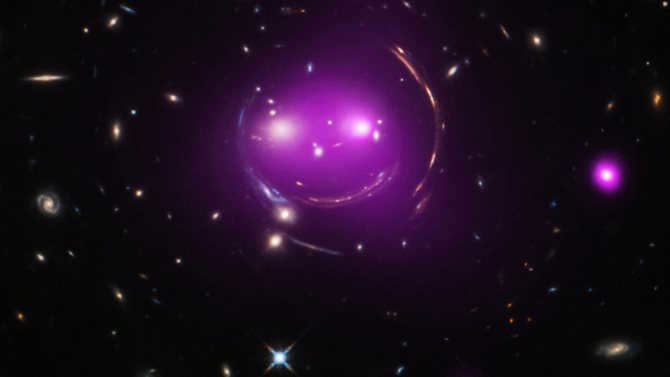
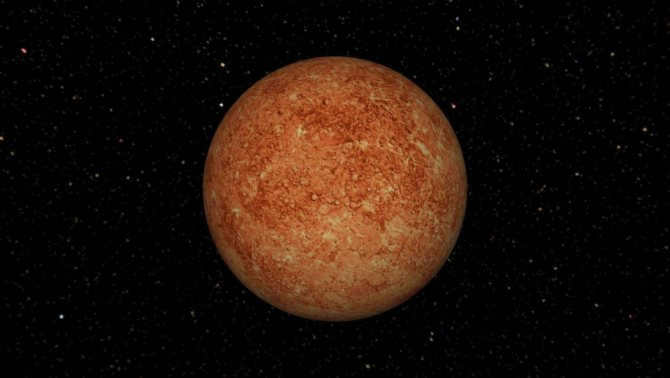
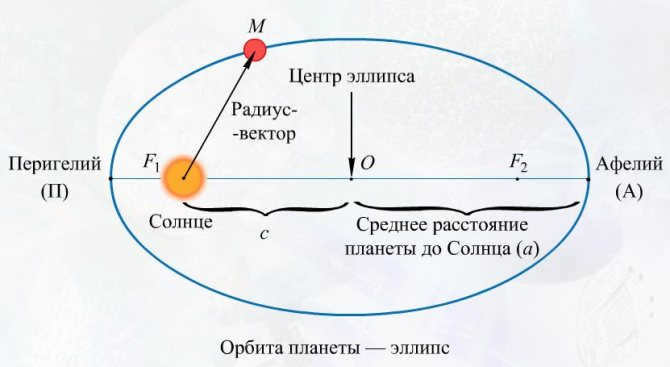
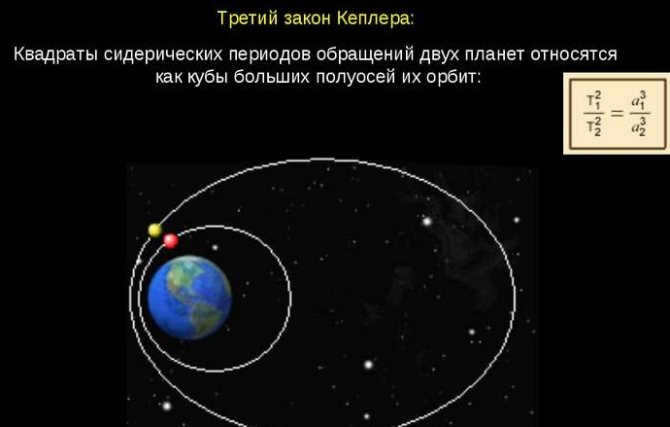

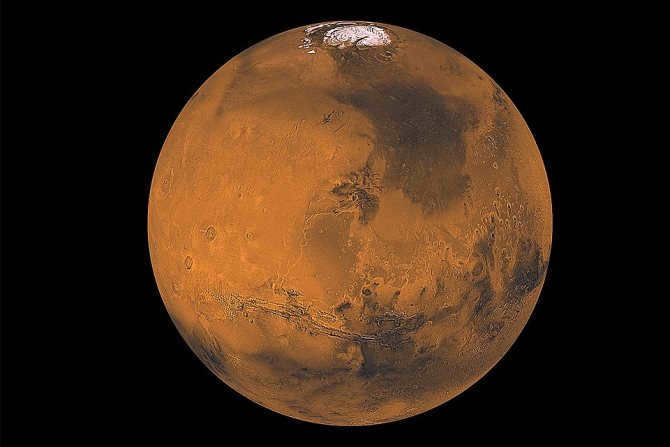
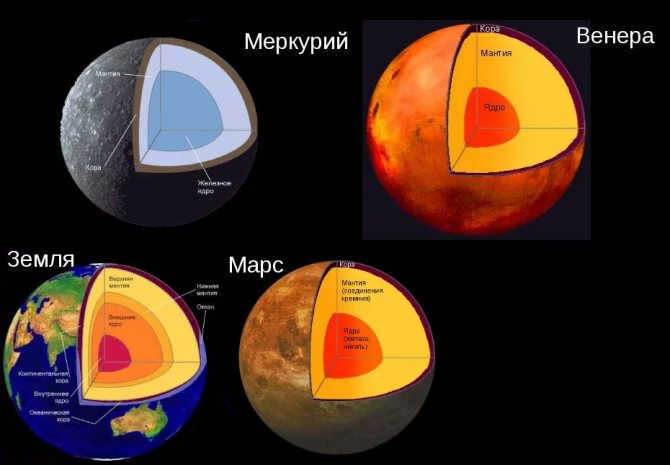
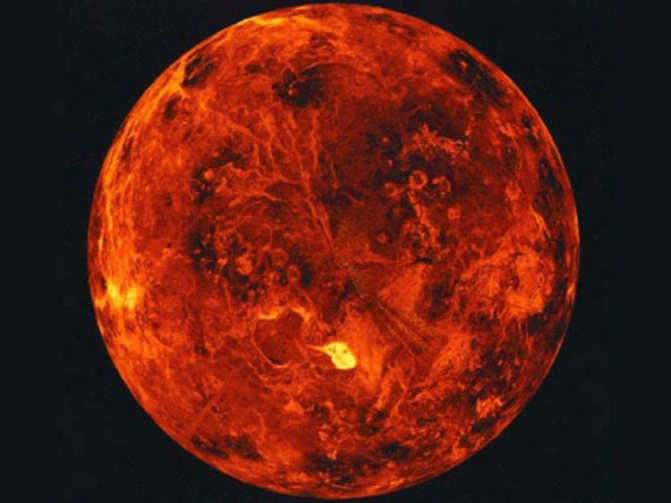
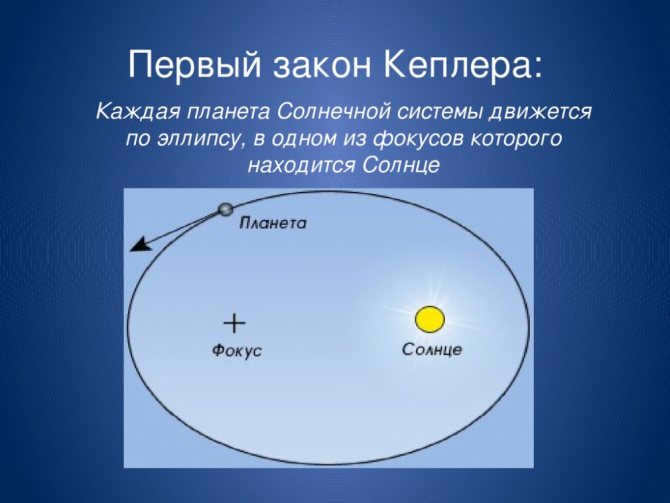
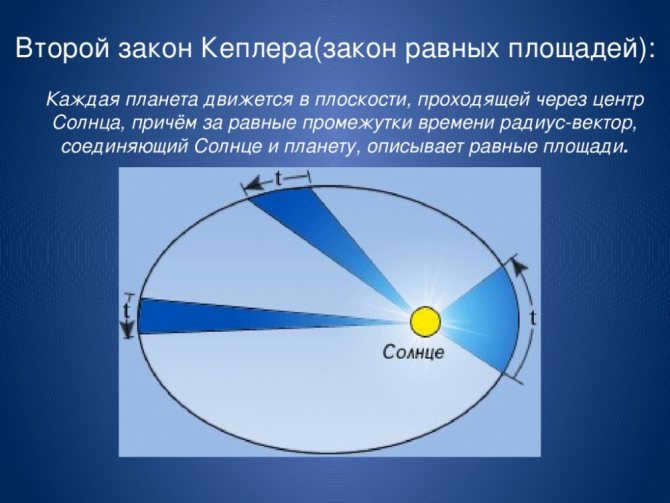
At present, the widely-accepted explanation for the birth of the solar system is the nebular theory. As per this perspective, approximately 4.6 million years ago, a massive molecular cloud experienced a collapse due to gravitational forces. The central region of the cloud remained in the gravitational core of the collapse, while the remaining portion transformed into a disk that eventually gave rise to planets and asteroids.
The collapse was most likely caused by the cloud compacting spontaneously, with remnants of hydrogen, helium, and metals already present. The explosive shock impact caused the cloud to become the center of gravitational collapse. As gravity took effect, the cloud’s size compressed and its rotation speed increased. The cloud’s rotation caused different velocities perpendicular and parallel to its axis, resulting in the formation of a disk-shaped object.
As a result of the compression process, the disk particles experienced an increase in collisions, leading to a rise in temperature. Once the disk’s temperature reached several thousand kelvin, the inner section began to emit light, signifying the formation of a protostar. The temperature within the disk continued to climb, eventually reaching a million kelvin, at which point a thermonuclear reaction between helium and hydrogen occurred. This reaction transformed the disk into a regular star, while the denser portions of the disk’s outer regions formed planets that orbited the star.
The vast expanse of cosmic space became populated with proplanets, estimated to number around 100-150. These objects continually collided and merged with one another, resulting in a fluctuating population count.
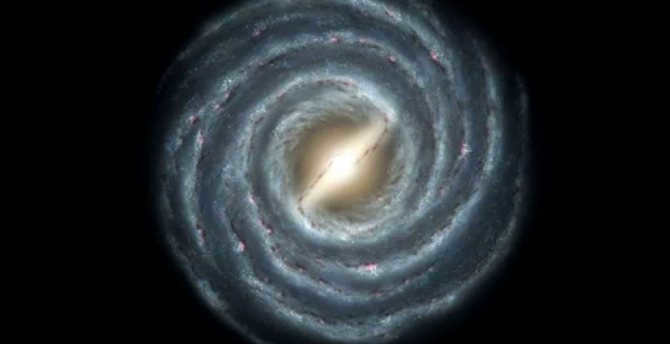
The Closest Star
Alpha Centauri C, also known as Proxima Centauri, is the third component of the star system that gives the entire constellation its fame. The name of this celestial body translates to “the closest”. Proxima Centauri is located approximately 13,000 light years away from its companions. It is an eleventh magnitude red dwarf, significantly smaller than the Sun (about 7 times smaller) and very dim. It cannot be observed with the naked eye. Proxima Centauri is known for its unpredictable behavior, as its luminosity can change by a factor of two within a matter of minutes. This unusual variation in brightness is believed to be caused by internal processes occurring within the dwarf star.
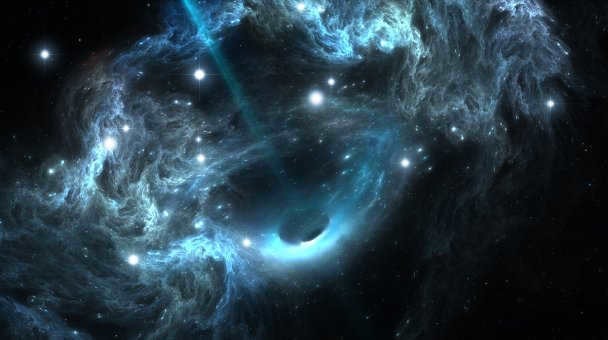
A group of astronomers has recently revised the scale of distances within our galaxy. According to their calculations, it has been determined that the solar system is actually positioned 2000 light-years closer to the center of the Galaxy than previously believed. This means that the supermassive black hole that resides in the center of our galaxy is also closer than initially thought.
Japanese astronomers took on the task of recalculating the distance from Earth to the center of the Galaxy, which consequently led to the discovery that our planet has moved 2000 light-years closer to this enigmatic phenomenon. There is no need for alarm as there is no immediate danger to humanity. However, this update provides scientists with an opportunity to gain a deeper understanding of the activities surrounding this immense black hole.
Cosmic triangles
Determining the distances to celestial objects is a crucial task in astronomy. It is only by accurately measuring the distance to a luminous point in the sky that we can determine its true nature. A faint point that appears close could actually be quite powerful, while a powerful point that appears distant may actually be relatively close. Without this crucial information, it would be easy to mistake a catastrophic explosion of a star in another galaxy for a mere dim flash in Earth’s atmosphere.
Scientists specializing in the field of astronomy possess a variety of tools at their disposal to measure the distance to stars. The first and most dependable technique is known as the parallax method. The following is an explanation of how it functions: we initially observe the direction of a remote object, such as a tall building, and then relocate to a known distance. We then observe how much the object has shifted in terms of angle. This angular displacement is referred to as parallax. As the distance to our reference point increases, the angle of parallax diminishes at a given offset distance. By determining the precise number of meters we have traveled and the number of degrees by which the object has shifted in our field of view, we can accurately calculate the distance to the object.
This task belongs to the realm of geometry, not physics, which is why astronomers highly value the parallax method. This method allows them to determine distances without making any assumptions about the nature of the observed object or the processes occurring within it. It simply requires solving problems involving triangles. This is why the parallax method is considered the most reliable when it comes to measuring distances.
However, celestial bodies are located too far away for movements on Earth’s surface to significantly alter the angle of view. Therefore, astronomers rely on the motion of the Earth in its orbit, which has a radius of 150 million kilometers. Even with this extensive baseline, distant celestial bodies still undergo subtle shifts in the field of view, necessitating the use of extremely precise measurements.
Novel representations of the household
In the particular study, scientists have deduced the distances to cosmic masers. These entities function as natural lasers, albeit emitting radio waves instead of visible light. In order to obtain more precise measurements of their parallax (angular displacement in the sky), researchers employed an interferometer.
An interferometer is a network of multiple remote radio telescopes. It operates as a unified instrument with exceptional resolution (the capacity to discern fine details). Such arrangements have been utilized for numerous decades. For instance, it was through the utilization of such an array that the initial image of a black hole was captured in 2019. Amidst numerous interferometric undertakings, there are also systems engaged in measuring distances via the parallax technique. One such project is VERA, led by Japan, which has procured fresh information regarding our position in the cosmos.
Using the resulting network, astronomers have been able to determine the distances to 99 masers located throughout the galaxy. The findings were recently published in April 2020 in the journal Publications of the Astronomical Society of Japan. Now, researchers have combined this data with information from other scientific organizations to recalibrate the position of the Sun in relation to the center of the Milky Way.
In 1985, the International Astronomical Union officially established the distance from Earth to the center of the Milky Way as 27,700 light-years. However, based on new measurements, this distance has been revised to be approximately 2,000 light-years shorter, now estimated at 25,800 light-years.
Earth is not in immediate danger from the central black hole of the galaxy, as it is still too distant. However, the significance of this scientific finding lies in the ability to accurately calculate the energy of flares and other phenomena associated with the supermassive black hole. This will enable astronomers to study this mysterious object in greater detail, which earned the Nobel Prize in Physics in 2020.
Furthermore, new data has emerged regarding the movement of the solar system. It has been discovered that the Sun and Earth orbit the center of the Galaxy at a speed of 227 km/s, which is 7 km/s faster than previously believed. To put this into perspective, the Earth’s speed in orbit around the Sun is approximately eight times slower.
To avoid any confusion, it should be noted that the gravitational pull of the central black hole is not connected to the Sun’s orbit around the center of the Galaxy. While the mass of the black hole (four million times that of the Sun) is enormous, it is still much smaller compared to the entire mass of the Milky Way, which consists of hundreds of billions of stars. Therefore, it is the Galaxy that determines the conditions for its supermassive black hole, not the other way around.
In the future, astronomers have plans to create a more detailed map of the Milky Way. To achieve this, the VERA project will collaborate with telescopes from China and South Korea as part of the EAVN network.
The billionaire’s space “race”: what are Musk, Bezos, and Branson wagering on?
The competing ventures of Musk, Bezos, and Branson in the space industry
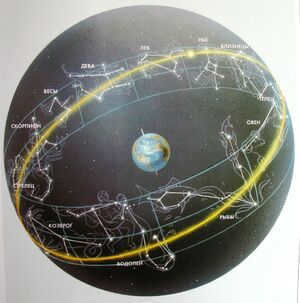
Outer space (cosmos) refers to the vast expanse of the Universe that exists beyond the confines of celestial bodies’ atmospheres. It is important to note that space is not devoid of matter entirely; rather, it contains a sparse distribution of particles, predominantly hydrogen, alongside electromagnetic radiation and interstellar material.
Etymology [ ]
The original meaning of the Greek term “cosmos” (meaning order or world order) was rooted in philosophy and referred to a hypothetical enclosed void surrounding the Earth, which was believed to be the center of the universe. However, in Latin-based languages and their loanwords, the practical term “space” is used to convey the same idea (as from a scientific perspective, the vacuum surrounding the Earth is infinite). As a result of linguistic reform, a unique oxymoron “cosmic space” emerged in Russian and its related languages.
Space Boundaries [ ]
A team of astronomers from the United States and Canada successfully determined the limit where atmospheric winds end and the influence of cosmic particles begins. They measured this boundary to be at an altitude of 118 kilometers, while NASA officially defines the boundary of space as 122 kilometers. This height marks the demarcation point [2] [3].
The region in the Solar System known as the Void of Space is not truly absolute – it harbors atoms and molecules that have been identified through the use of microwave spectroscopy, residual radiation that originated from the Big Bang, and cosmic rays that consist of ionized atomic nuclei and a variety of subatomic particles. Additionally, there exists gas, plasma, particles of dust, and miniature moons that serve as optimal locations for conducting astronomical observations across the entire range of the electromagnetic spectrum. Evidence of this can be found in the images captured by the Hubble Space Telescope. Furthermore, spacecraft provide invaluable insights into the planets, asteroids, and comets within our solar system.
The Impact of Space Travel on the Human Body
Contrary to popular belief, NASA scientists have stated that entering outer space without a protective suit will not result in freezing, exploding, or instant loss of consciousness. Instead, death will occur due to lack of oxygen. The most dangerous aspect of this process is the decompression period, during which gas bubbles in the blood expand rapidly. If there is a refrigerant, such as nitrogen, present, it can cause the blood to freeze. In the conditions of space, the lack of pressure prevents the maintenance of a liquid state (except for liquid helium), resulting in rapid evaporation of water from the body’s mucous membranes (such as the tongue, eyes, and lungs). These are just a few of the issues that arise in space conditions [5].
In February 13, 1995, Aviation Week and Space Technology magazine published a letter recounting an incident that took place on August 16, 1960. The incident occurred during the ascent of a stratostat with an open gondola, as the individuals attempted to reach an altitude of 19.5 miles for a record-breaking parachute jump. This event is documented in [6].
Alpha Centauri has been a focal point for spacecraft missions in numerous works of science fiction. This star, which is the closest one to us, is often associated with the legendary centaur Chiron from Greek mythology. Chiron was known as the teacher of Hercules and Achilles, making Alpha Centauri a celestial representation of this mythical figure.
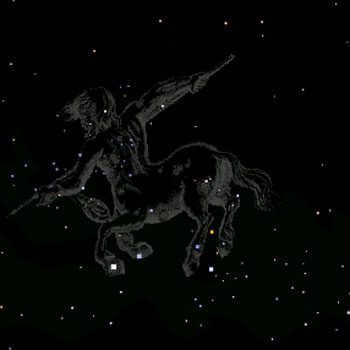
Contemporary scientists, along with authors, continuously reflect on this celestial system, as it serves as not only the initial choice for a lengthy cosmic voyage, but also a plausible contender for hosting an inhabited world.
Arrangement
The arrangement of the Alpha Centauri star system consists of three celestial bodies: two stars named A and B, and Proxima Centauri. These stars are known for their unique characteristics, with two components being in close proximity to each other while the third is located at a distance. Proxima Centauri is the latter mentioned star. The entire Alpha Centauri system, including its components, is approximately 4.3 light-years away. Currently, there are no stars that are closer to Earth. However, Proxima Centauri is the most accessible in terms of travel distance, as it is only 4.22 light-years away.
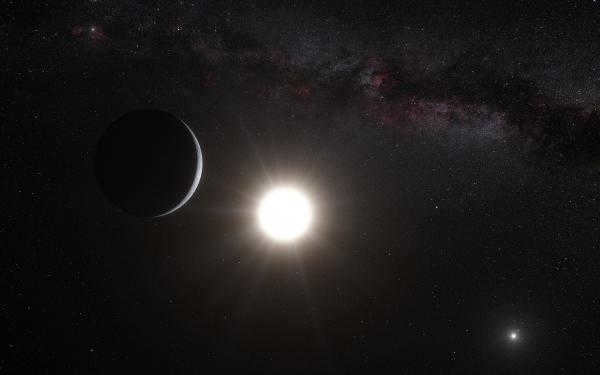
Relatives of the Sun
Alpha Centauri A and B are distinct from their companion, Proxima, not only in their distance from Earth. They share many similarities with the Sun. Alpha Centauri A, also known as Rigel Centaurus (translated as “Centaur’s foot”), is the brighter star of the pair. It is a yellow dwarf, similar to the Sun. It is easily visible from Earth, with a stellar magnitude of zero. This makes it the fourth brightest point in the night sky. Additionally, its size is nearly identical to that of the Sun.
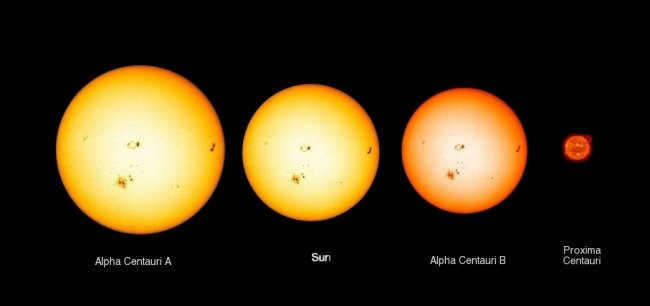
The mass of the star Alpha Centauri B is less than that of our Sun (approximately 0.9 times the value of the corresponding parameter). It is classified as a first-magnitude object, with a luminosity level that is roughly half that of our Galaxy’s main star. The distance between these two neighboring companions is 23 astronomical units, which is 23 times greater than the distance between the Earth and the Sun. Toliman A and Toliman B orbit around a common center of mass, completing one revolution every 80 years.
Recent breakthrough
As previously mentioned, scientists are eagerly anticipating the groundbreaking discovery of extraterrestrial life in the vicinity of the Alpha Centauri star system. The planets postulated to exist in this region may bear striking similarities to our own planet, much like the components of the system bear resemblance to our own sun. Until recently, though, no such celestial bodies had been identified in close proximity to the star. The vast distance between us and Alpha Centauri makes direct observation of these planets impossible. However, thanks to advancements in technology, we now have the means to gather evidence of the existence of an Earth-like object in this distant star system.
Scientists have successfully detected minute oscillations of Toliman B using the ray velocity method, which occur as a result of the gravitational forces exerted by a planet orbiting around it. This discovery provides evidence for the presence of at least one planet in the system. The planet’s influence is evident in its displacement of 51 cm per second in a forward and backward motion. On our planet, this type of movement would be easily noticeable, even with larger objects. However, detecting such a subtle wobble from a distance of 4.3 light years seems nearly impossible. Nonetheless, scientists have managed to record it.
Sibling to the planet Earth
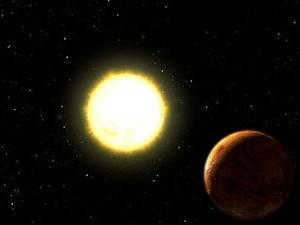
The planet discovered revolves around Alpha Centauri B in a mere 3.2 days. Situated in extremely close proximity to the star, its orbit radius is a mere one-tenth that of Mercury’s. With a mass similar to that of Earth, it is approximately 1.1 times the mass of the Blue Planet. However, the similarities end there, as scientists believe that the planet’s close proximity makes the emergence of life impossible due to the excessive heating from the star’s energy reaching its surface.
The Nearest Star System
One of the most well-known components of the star system is Alpha Centauri C, also known as Proxima Centauri. This celestial body gets its name from being the closest star to Earth. Proxima Centauri is located approximately 13,000 light years away from its companion stars. It is classified as an eleventh magnitude red dwarf, which is significantly smaller than our Sun, about 7 times smaller in size. Due to its dimness, it is not visible to the naked eye. Proxima Centauri is known for its dynamic nature, as its luminosity can change rapidly within a matter of minutes. This behavior is believed to be caused by internal processes occurring within the dwarf star.
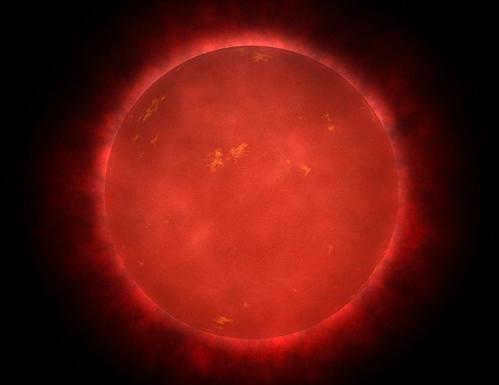
Two-fold position
For a considerable period, Proxima was regarded as the third component of the Alpha Centauri system, orbiting around the duo of A and B within approximately 500 years. Nevertheless, there is a growing belief that the red dwarf is unrelated to them, and the interaction among the three celestial bodies is a transient occurrence.
The data indicating that a binary star system lacks sufficient gravitational pull to also retain Proxima has caused doubts. This information, obtained in the 1990s, has long needed further confirmation. Recent observations and calculations by scientists have not provided a definitive answer. It is hypothesized that Proxima may still be part of a triple system and orbit a shared gravitational center. In this scenario, its orbit would resemble an elongated oval, with the farthest point from the center being the one where the star is currently observed.
Projects
However, Proxima is planning to embark on its first flight when it becomes feasible. The current state of space technology suggests that the journey to Alpha Centauri could potentially take over 1000 years, which is an unimaginable amount of time. As a result, scientists are actively exploring ways to shorten this duration.
